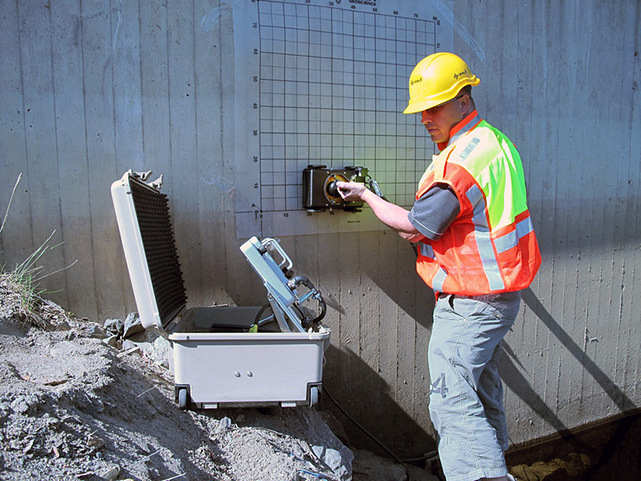RainierGPR Concrete Scanning: Secret Insights for Effective Tasks
Exploring the Depths: A Comprehensive Overview to Concrete Scanning and Its Diverse Applications
In the world of building and construction and facilities growth, the thorough process of concrete scanning holds an essential duty in making sure the structural integrity and safety and security of tasks. As modern technology remains to evolve, the applications of concrete scanning have expanded much beyond simple surface-level assessments. From finding rebar and post-tension cable televisions to drawing up conduits and gaps concealed within concrete structures, the abilities of contemporary scanning methods are both impressive and necessary. The true depth of concrete scanning's potential reaches also better, branching into unforeseen markets and sparking ingenious services. The interconnected internet of opportunities that concrete scanning provides is not only fascinating however additionally critical for the innovation of various sectors.
Value of Concrete Scanning
Understanding the relevance of concrete scanning is essential in making sure the safety and security and honesty of structures throughout building and construction and renovation projects. Concrete scanning uses innovative modern technologies such as ground-penetrating radar (GPR) and electro-magnetic induction to detect embedded items, spaces, or various other abnormalities within concrete frameworks - RainierGPR Concrete Scanning. By performing comprehensive scans prior to drilling, cutting, or coring right into concrete, building teams can avoid accidental damages to crucial structural components like rebar, conduits, or post-tension cables. This positive technique not only avoids costly repair services and task hold-ups however likewise enhances overall construction safety by mitigating the risk of architectural failings or collapses as a result of endangered stability.
Additionally, concrete scanning plays an essential function in guaranteeing conformity with building codes and regulations that mandate the security of existing structural parts during building and construction activities. By accurately drawing up the internal make-up of concrete, scanning innovations make it possible for construction experts to make informed decisions that support the architectural stability and resilience of buildings and infrastructure tasks. Fundamentally, the importance of concrete scanning depends on its capability to guard both the structural integrity and the personnel entailed in building undertakings.
Technologies Utilized in Concrete Scanning
Concrete scanning counts on innovative technologies such as ground-penetrating radar (GPR) and electromagnetic induction to properly spot embedded objects and anomalies within concrete structures. Ground-penetrating radar runs by releasing high-frequency electro-magnetic waves right into the concrete.
Electromagnetic induction, on the other hand, works by generating magnetic fields around a concrete framework with a transmitter coil. When steel items exist within the concrete, they interrupt these electromagnetic fields, triggering eddy currents to stream through the steel. By measuring the modifications in the magnetic fields with a receiver coil, the system can identify the area of metal items in the concrete.
These innovative modern technologies play a critical function in non-destructive testing, guaranteeing the safety and honesty of concrete structures in different industries.
Applications in Construction Market
Within the building industry, concrete scanning technology discovers diverse applications that enhance project efficiency and security. Furthermore, concrete scanning is used for finding spaces, such as air pockets or locations of wear and tear within concrete, which can jeopardize the overall strength of a structure. Concrete scanning plays a vital duty in quality control by verifying the density of concrete covers over reinforcement, making sure compliance with style specifications and standards.

Safety Advantages of Concrete Scanning
In the world of construction safety and security, the implementation of concrete scanning innovation provides a paramount advantage in preemptively recognizing prospective threats and fortifying architectural integrity. By making use of sophisticated scanning techniques such as ground-penetrating radar (GPR) and electro-magnetic induction, construction teams can accurately situate rebar, post-tension cable televisions, channels, and various other surprise objects within concrete structures. This positive technique considerably minimizes the threat of unintentional strikes during boring, cutting, or coring tasks, therefore avoiding pricey problems, injuries, and task hold-ups.
Additionally, concrete scanning boosts worker safety by offering real-time information concerning the architectural condition of concrete elements. This information enables building and construction experts to examine the honesty have a peek here of existing frameworks, recognize deterioration or problems, and make informed decisions relating to repair and maintenance procedures. By addressing potential security issues immediately, concrete scanning adds to producing a safe and secure workplace and mitigating the likelihood of architectural failings or crashes on building sites. Ultimately, the safety benefits of concrete scanning not only secure lives and assets however additionally promote market standards for top quality and integrity.
Future Trends in Concrete Scanning
Emerging improvements in scanning innovation are positioned to revolutionize the field of concrete examination and analysis. By harnessing the power of AI, these systems can examine substantial amounts of data collected during scanning processes to supply even more comprehensive and exact insights into the condition of concrete structures.
Another significant trend is the development of more portable and user-friendly scanning devices. Miniaturization of scanning equipment enables much easier accessibility to confined rooms and remote locations, making inspections much more effective and thorough. Furthermore, innovations in cordless communication innovations allow real-time information transfer and evaluation, assisting in quicker decision-making processes.
Furthermore, there is a growing concentrate on sustainability in concrete scanning modern technologies - RainierGPR Concrete Scanning. Suppliers are significantly integrating environment-friendly products and energy-efficient functions read this post here into their devices to lower environmental impact. These future fads are readied to improve the effectiveness, precision, and sustainability of concrete scanning methods, shaping the sector's future landscape
Final Thought
To conclude, concrete scanning plays a crucial duty in the building industry by making certain the safety and security and efficiency of different tasks. By using advanced modern technologies, such as GPR and radar imaging, experts are able to precisely discover potential risks within concrete frameworks. The applications of concrete scanning are large and remain to evolve, making it a crucial tool for keeping the integrity of structures and framework. As innovation advances, the future of concrete scanning holds encouraging developments for enhancing construction processes.
